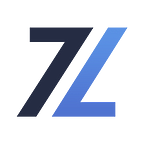Understanding the SCOTUS Ruling on Google v Oracle and Why It Matters
Q&A with Stephen Ball, Director, Engineering
By Virginia Moore, Director, Communications
Last week, in a fairly one-sided ruling, the U.S. Supreme Court (SCOTUS) declared that Google did not violate Oracle’s copyright when it used a piece of Oracle’s code to develop its Android platform. This verdict made it onto our #reading Slack channel with unusual gusto from our engineering lead, Stephen Ball. Intrigued, I wanted to learn how this first-time father of an infant had time to read SCOTUS rulings (turns out he follows SCOTUS) and why he was so keen on this case. So let’s hear more from Stephen:
First of all, Stephen, are you Team Google or Team Oracle?
I’m very much on Team Google for this one, given the scope and the weight of this lawsuit.
Essentially, Oracle argued that whether Google copied 100 lines of code or 1 million — all of Java was copyrighted, including any APIs, and therefore using any of it without permission was illegal. In truth, Google built a brand new implementation of Java and, in doing so, employed APIs and a portion of Oracle’s original code. Oracle’s broad claim would have had wide-ranging and negative implications across the tech and consumer goods industries.
You actually read the Supreme Court opinion about this case, right?
I did. Following SCOTUS stems from a perennial interest in how things work. In technology, this could mean I’m deciphering new code or reverse engineering an unknown system. This time it’s about understanding why the legal system operates the way it does. SCOTUS’ caseload is pretty small, but the decisions they make have huge implications. It can be fun to figure out why they made those decisions.
Spoken like a true engineer. So what was at play in this lawsuit?
This case comes down to two main issues: copyrightability and fair use.
Over the last couple decades, Congress has been clear that computer code can be copyrighted. It’s a form of creative expression and a genuine innovation and that is protected by law. Interestingly, SCOTUS declined to rule on the copyrightability of the code in question. Instead, they focused on whether the usage of the code in question was “fair use.” By avoiding the copyrightability decision, SCOTUS was able to provide a targeted, modern interpretation of fair use that lower courts can now use to make decisions.
Fair use allows someone to take copyrighted work and use it without permission — it’s an exception to copyright rules. In this case, what Google copied from Oracle was not the implementing code, but rather its organizational structure and its APIs. You can think of it like the table of contents of a book — Google used the same chapter titles and indices as Oracle, but the contents of those chapters and indices are all original. In the end, SCOTUS decided that the “table of contents” is indeed fair use.
That’s a good way of putting it. What other helpful analogies have you seen for how to think about copyrights and fair use?
A great analogy Justice Breyer uses in the ruling is a factory, and specifically the layout of the machines in that factory. You can’t copyright the layout of the machines in a factory even though you can copyright the items those machines manufacture.
What about analogies for what this disputed Java code represents to Google’s Android system?
You could liken the way Google uses Java to the way people use ATMs. Since most ATMs have a similar interface, such as slots for a debit card, a tray for cash, etc., people have learned to use ATMs of all kinds. But the internal workings of the ATMs can differ between banks — some might use robots to handle transactions, while others might employ humans or highly-skilled squirrels! The point is people have learned to use ATMs even if they don’t know how the ATM works on the inside. Similarly, people who learn to write Java code do it by learning the APIs that Java exposes, without needing to understand how Java works under the hood. SCOTUS emphatically stated that an individual’s knowledge of Java could not reasonably be “owned” by Oracle, which is why Google can use the Java API structure without a license from Oracle.
Why is this an important ruling? What is its significance to a mission-driven tech startup like Zenysis?
The ruling is significant because it keeps the marketplace open, competitive and healthy. It preserves the mechanisms that enable systems interoperability. A negative ruling would have likely increased costs, and that would have hurt our ability as a company, as a tech industry, and as a country to produce products that people enjoy all over the world.
Zenysis is where it is today in part because of the open source ecosystem, and anything that threatens the ability of software maintainers to release their products for free jeopardizes our work. We support the open source ecosystem, and we open sourced our core analytics platform to give back and add value to that community.
Additionally, our platform helps governments and institutions perform vital humanitarian functions, and we don’t want to see that impact diminished by overzealous copyright laws. I’m heartened to see SCOTUS reinforce the true intention of U.S. copyright law, which is to facilitate creativity and innovation without impeding the public interest.
Stephen Ball is the lead architect and primary steward of the Zenysis platform. As director of engineering, Stephen is responsible for developing technical strategy, leading new products and mentoring the development team. Prior to joining Zenysis in 2016, Stephen worked for Room 77. He holds a BS in computer science from the Georgia Institute of Technology (Georgia Tech) and lives in San Francisco, CA.
